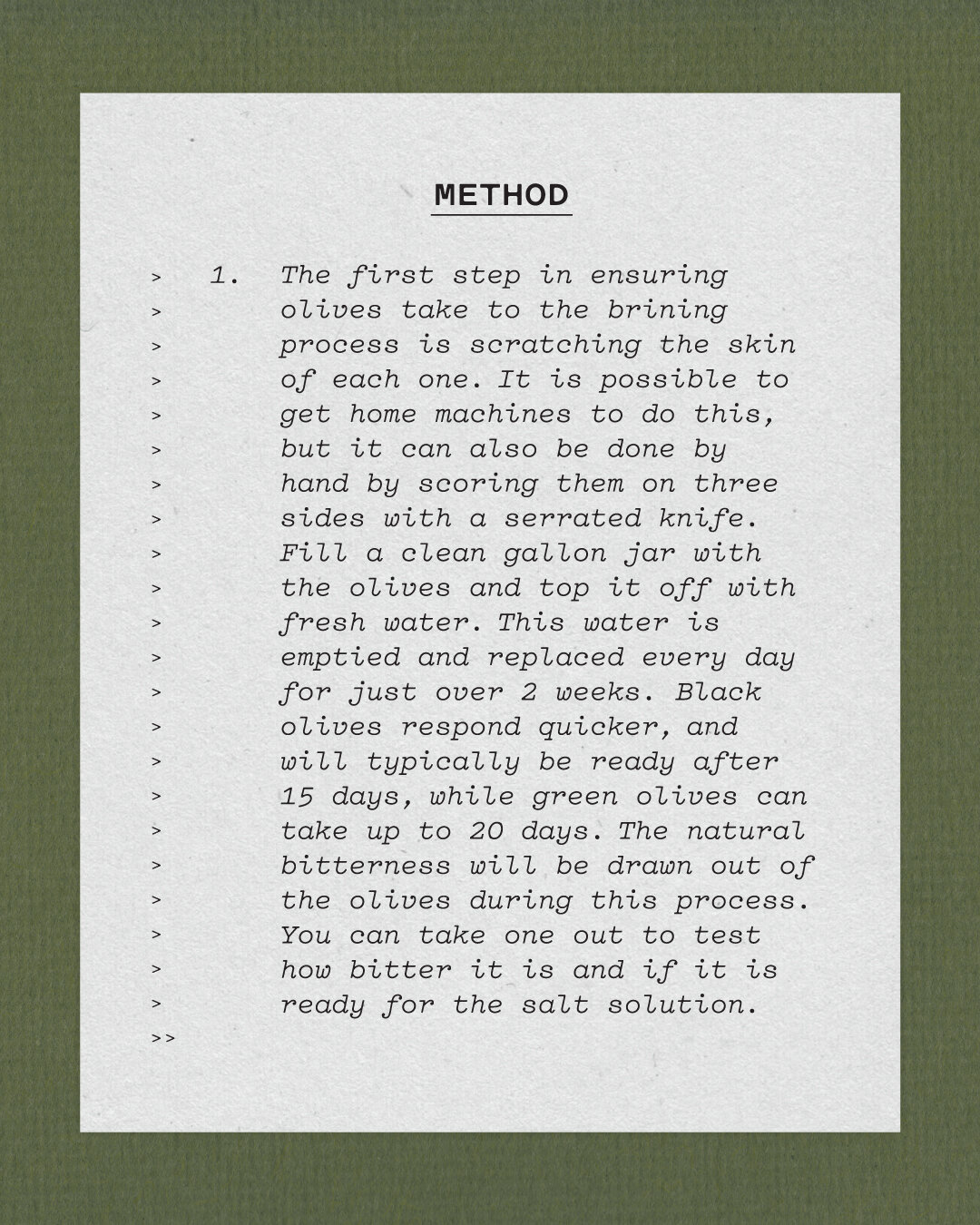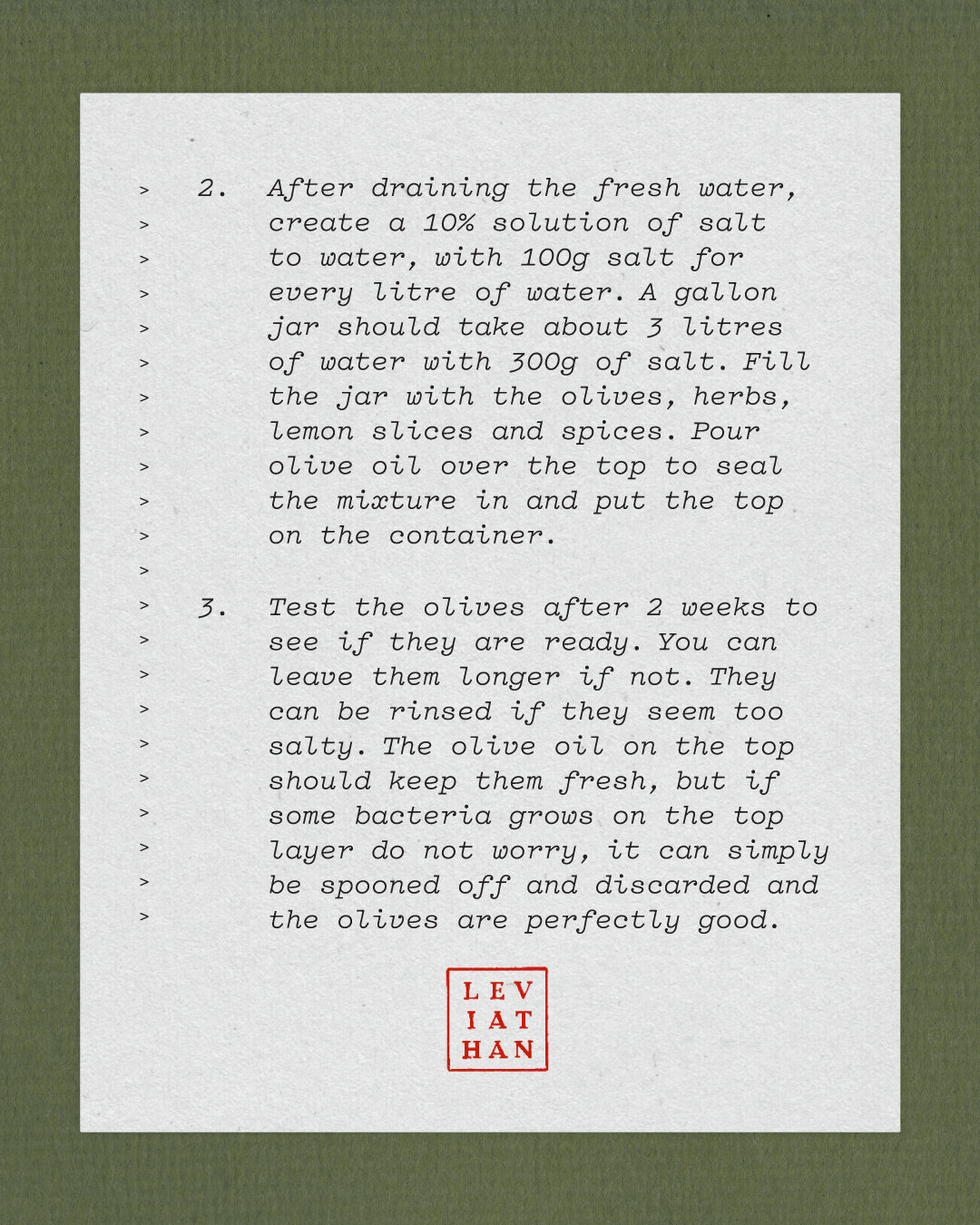Home-cured Olives
First things first; there are many ways to cure fresh olives, whether it’s with water, lye, dry salting, or lactic fermentation using a brine. Last summer, I travelled to Andalucía in the south of Spain, where the Montes family showed me their own tried and tested techniques, made with home-grown olives fresh from their very own trees. It begins with soaking them in fresh water before adding them to a salted, seasoned brine. The process takes a bit of time but is very simple. Raw olives are incredibly bitter, and this process helps to draw that out and makes the most of them for table eating.
I had never thought about it before, but one thing I discovered is that green and black olives are one in the same fruit, simply at different stages of ripeness. Green olives are younger (unripe), while black olives are harvested when they are more mature. Both can be used for preserving, but it’s best to stick to the same type at any given time and select olives of similar size. Try to discard bruised or scarred olives when following these steps. Speciality shops and markets can help sourcing raw olives, depending on your location, and they are typically not expensive. plastic or ceramic containers work for this. The result of these methods are a slightly firmer olive than store-bought, and free from any additives or chemical processes. Other flavours can be added in the final stages, and things such as thyme and fennel add extra layers of depth.
Ingredients
Getting started
click or tap on the recipe cards
below for the full instructions


